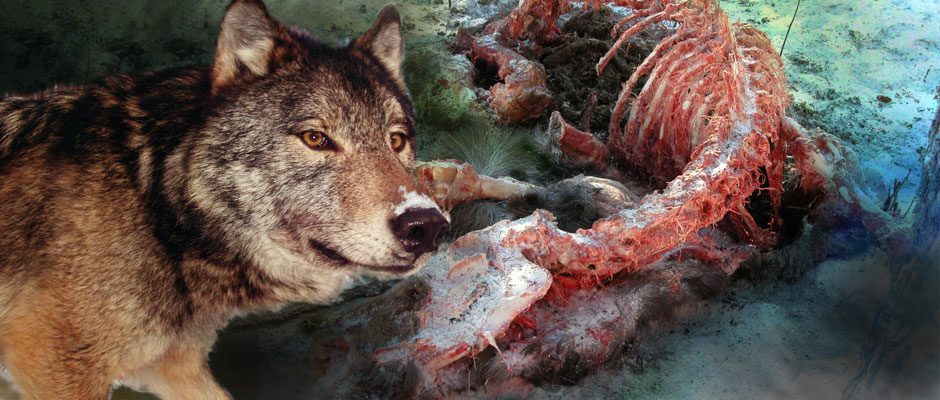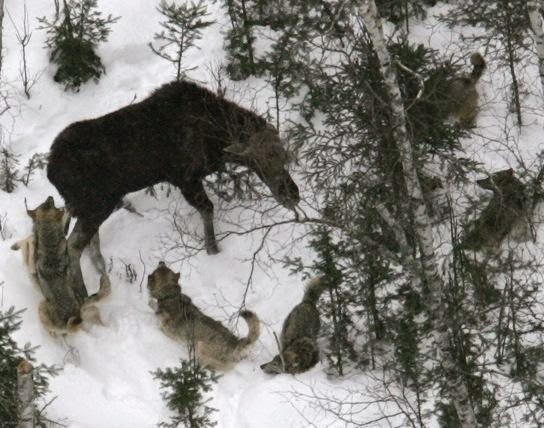
However, large carnivores are now also returning to areas with high human impacts (Chapron 2014 Kuijper et al. Until recently, the majority of studies on behavioral responses of prey in relation to large carnivore predation risk have been conducted in protected areas (national parks) (Kuijper et al. For example, Yellowstone National Park (YNP) in North America is characterized by a higher relative degree of open habitat, e.g., meadows mixed with large forest patches (Newman and Watson 2011) as compared to Białowieża national park in Poland which consists of large continuous homogenous broad leaf forest with few and relatively small open areas (Schmidt and Kuijper 2015). However, protected landscapes with no or low degree of human impact may vary in terms of habitat composition and landscape structure resulting in contrasting patterns of prey response to risk of predation (Schmidt and Kuijper 2015). These factors may in turn vary with spatial scale and intensity of land use that may lead to significant changes in for example habitat fragmentation and landscape structures (Estreguil et al. One explanation to such contrasting patterns may be that factors affecting the behavior and distribution of prey differ between studies e.g., (1) the physical landscape (e.g., vegetation and topography) (2) spatial variation in risk (e.g., cover) and (3) perception of risk among prey (e.g., scent, memory) (Gaynor et al 2019). However, there are several cases where predator recolonization has no or weak effects on the response behavior of prey (Kauffman et al. 2001 Creel and Christianson 2008) but prey may also retain anti-predator behavior despite long periods of predator absence (Chamaillé-Jammes et al. When predators return, prey can swiftly re-gain their former anti-predatory behavior (Hunter and Skinner 1998 Laundré et al. In some of these areas, prey species have lost anti-predator behavior, as lack of predators result in selection against such costly behavior (Blumstein and Daniel 2005 Sih et al. In large parts of the world, human persecution has resulted in extirpation of large terrestrial carnivores during the last centuries.

These effects may in turn have consequences for the demography of populations, and therefore, also have implications for conservation and management. 2011), through movement and habitat selection, or through modulation of their activity towards less risky times of day (Fortin et al. The risk in turn may drive prey towards less risky habitats (Lima and Dill 1990 Creel et al. Landscape of fear refers to the spatial variation in prey perception of predation risk (Laundré et al.

We conclude that the landscape of fear is likely to have weak ecological effects on moose in this system. Human-driven habitat heterogeneity, concentration of moose forage to certain habitat types, and the effects of a multiple predator guild on moose may all contribute to the results found. Thus, the effect of wolves varied among habitat types and there was no unidirectional support for a behavioral effect of wolves’ establishment on moose habitat use. Wolf establishment did not influence the use of habitat close to dense habitat when being in open habitats. After wolf recolonization, moose reduced their use of one type of open habitat (bog) but there was neither change in the use of the other open habitat type (clear-cut), nor in their use of young forest.

We assumed that coursing predators such as wolves will cause an increased risk for moose in some habitat types and tested the hypotheses that moose will avoid open or young forest habitats following wolf establishment. We used long-term data on the distribution of moose in different habitat types in a system characterized by intensive management of all three trophic levels (silviculture, harvest of wolves and moose) to study effects on moose habitat selection resulting from the return of an apex predator, the wolf.

Behavioral responses of prey in relation to large carnivore predation risk have mainly been conducted in areas with low anthropogenic impact. Landscape of fear refers to the spatial variation in prey perception of predation risk, that under certain conditions, may lead to changes in their behavior.


 0 kommentar(er)
0 kommentar(er)
